Recent history in Ekain
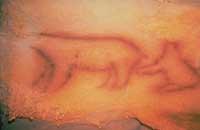
Hidden Treasure Hidden Treasures
The Azpeitiarras are some of the “guilty” of the unsolvable current situation between low debates and zestoa, since two young Azpeitiarras found Ekain’s treasure in June 1969, working for the Aranzadi Science Society. During the extraction of samples in the surroundings of the cave, it was observed that cold air was coming out through a hole. It seems that behind there is more hole. The hole was opened and by it they entered the narrated. In this way, about 20 meters were crossed, while the hole was gradually opening. Suddenly, on an interior wall they found painted horses and other figures, the treasure of Ekain. J.M. Society Aranzadi Barandiaran and J. After visiting the cave of Altuna and seeing the paintings, it was decided to close Ekain.
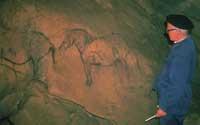
The time and events that occurred in Altamira or Lascaux have shown that it was the best decision to close Ekain, but then it did not provoke little criticism. While stealing culture, it was a measure contrary to tourist attraction… Barandiaran, Altuna and the company had to listen to it. Santimamiñe, Arenaza de Galdámiz, Altxerri de Orio, Solacueva de Álava… they are an example of the heritage that has deteriorated because it is open to the public, while Ekain is an example of the conservation of heritage as it was. And it is that, as the set of cliffs of Ekain's paintings and the hole that occupies it were found on the same day, there has been no chance of putting someone in for something to be damaged.
No diseases in Ekain
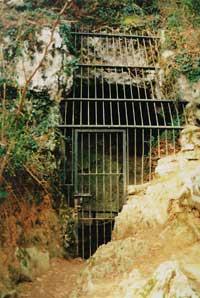
Since 1969 nothing has changed in Ekain. The two iron doors placed at the beginning are still there, someone from Aranzadi attends the doors assiduously, fixed electricity has never been installed, the number of visits and age (6 people over 18) are limited, lanterns are used and the visit is directed by a guide from Aranzadi.
The measures adopted have allowed the rock art of Ekain to have suffered no damage, neither white nor green, nor any other colour.
Visits to the caves produce two types of damage in rock art, known as green and poor white. The green disease is caused by the presence of algae, mosses, fungi or bacterial spores in the clothing and footwear of visitors. These spores are organized in colonies and are reproduced; sometimes without the need for light (fungi and bacteria); sometimes with the help of light and carbon dioxide produced by visitors (algae, moss). The colonies form a chlorophyll cycle in which the walls of the caves are put green until covering the paintings. Green disease is fought by antibiotics, fungicides, or algizidas.
The white disease is much more harmful than the green disease, since without touching the paintings you can not resist. The white disease occurs by placing limestone glassware on the limestone wall. In the caves, reactions between calcium carbonate and bicarbonate occur spontaneously, but as a result of visits, by increasing the temperature and producing carbon dioxide, the reactions change and appear crystalline. What happened in the cave of Lascaux revealed the relationship between the visits and the evils of the paintings.
Despite the measures taken in his time, Ekain does not have any disease, but it does much to show. The cave of Ekain has become well known in the field of prehistoric research, due to the cave images that are preserved in it. The painting of Ekain is essential in any work that wants to study the paleolithic. In total there are 70 images in Ekain, 64 paintings and 6 prints. In addition, some paintings also carry engraving. Although in most of the paintings the black color has been used, in the five can be seen mixed with ochre. The horse is the most abundant, with abundant bison; you can see deer and wild, a salmon and, finally, a pair of bears. According to experts, the paintings would correspond to the Magdaleniense Media and Superior, between 12,000 and 15,000 years ago.
Is it a hidden treasure?
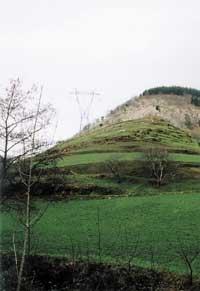
So few opportunities to exhibit… and see? It is clear that the decision to close Ekain was correct, because if it had been left open, perhaps today there would be nothing to see. However, the decision to keep the treasure can also have a point of contradiction, because if no one has to see it, why? The Aranzadi Science Society recognizes that more and more people are asking to visit the Ekain cave. On the other hand, the doors of Ekain are closed for young people, interested or not, since the visit of children under 18 is not allowed. Therefore, if the conservation of heritage and education in its conservation is a work of all, why not give the same opportunity to all? In such thoughts, the advances that have been made in the field of the replicas of the caves to the Aranzadi have come very well. And the two projects that have arisen with that intention of conserving them.
Bi June
However, hence the differences between the zestoarras and the low debates. And it is that in order for people to visit it, each one wants his replica near his people, and each one has his project.
The municipalities of Bajo Deba have seen in the Ekain project the opportunity to help out of the valley of the crisis in the hope of strengthening tourism. To do this, a project has been prepared of four constructions that would encompass a natural environment of 40 hectares and different areas for possible visitors, putting a whole day so that potential visitors can pass there.
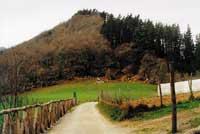
The project would consist of a reception building, another of 1,374 square meters that would house the replica, a center of archaeological and aesthetic exhibitions, a center of exhibitions of new avant-gardes and, finally, a workshop center of mythology and expression. All the above would be located in the valley of Astigarribia, on the left bank of the river Deba and in the lands of Mutriku, four kilometers from the urban core.
The project of Zestoa would be developed in the neighborhood of Sastarrain 500 meters from the original cave and a few kilometers from the urban core. According to the Zestoa project, the protection of all Sastarrain would be integrated into a special plan recently approved to preserve the cave environment. In the replica would be made paintings of the gallery of horses, the set of bears and the surroundings of the gallery of bears, and the head of a horse. A budget of 500 million to preserve the protected space of Sastarrain, replicate the cave and convert the Lili palace into museum. The replica of Ekain, together with the spa, the proximity of Loiola on one side and the coast on the other, and the recent nursery of Iriakaitz, would represent a point of interest for Zestoa.
Update technique of the past
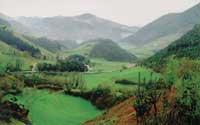
The latest news published in daily newspapers indicate that the Zestoa project is moving forward. And it is true that the debate has been new and that the debate is there, but for the purpose of this article does not say much, because the main objective is to explain the technique of making replicas of caves.
The replicas are made by the protection and diffusion of the heritage, that is, by the diffusion of the culture. The first replica of a cave was made in the 1960s, when the Germans replicated part of the Altamira cave for the Deutsches Museum in Munich. The Spanish government authorized the Germans to replicate, but in return they had to do another under the garden of the Museum of Archaeology of Madrid. The following replica was made in France, in the Lascaux de Dordonia, in 1990. It is a very faithful copy, made in the underground. The air is at the same temperature as the original cave and through music is remembered the dripping of prehistoric caves.
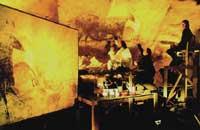
Shortly afterwards the replica of the cave of Niaux was made in Tarascon, France, but in this case inside a museum. These are the replicas made to date. The replica of Altamira is an already underway project that will be carried out also within a museum. But this project has a peculiarity, unlike what happened so far, in the replica of Altamira it is intended to replicate the vegetation treaded by those people who, in addition to the cave, carried out the geophysical conditions and the paintings of the land of the time. It will soon be known if you can do it with Ekain.
Alley of the cave
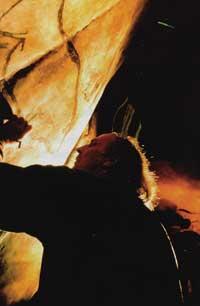
Picking up the peculiarities of the world of art, cinema and theatre, the Fac-simile technique is used to perform replicas of the caves. Through fac-simile the old work is reconstructed to real size and in three dimensions. Photography is at the base of the fac-simile technique. Although the theory is very simple, the first difficulty is in the correct data collection. Then, the photograph of the cave wall is projected in the workshop on the wall of the replica, respecting the two dimensions of the point of view (focal and positional) and without deformations, that is, in size and natural form. It would be like making a decals, both for the reconstruction of the wall and for the reconstruction of paintings and engravings.
The reconstruction of the wall itself consists of two differentiated phases, a copy of the volumes and general reliefs and the mineral restoration of the wall. For the realization of the first phase, stereofotometry (photographic technique) is used through the production of stratified polyester moulds. The moulds are light and removable. For mineral restoration work on the mold extracted in the first phase. From natural minerals (sand, clay, silica, etc.) Acrylic compositions, easy to manage, that admit all the molding techniques, that allow the use of the entire range of colors, that allow to realize corrections and that allow to realize unvisible joints. Wall that preserves all the result, realism and reliability; wall and, at the same time, a long-lasting mold, which is manufactured in the workshop, is tuned, carried, placed in the place that should be exposed and adapted perfectly.
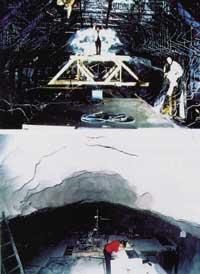
Once the copy of the wall has been made, a copy of the paintings and engravings will be made. In this case the projected image is also used, adding the original on fac-simile. For the original colors to be respected, the same colors are used as those used by prehistoric artists: land, coal and natural oxides. In the restoration tools, everything from the finest brushes to the most modern computer: the brush allows a concrete work, while the computer can provide more information about the photo, dividing the image by points and isolating each nuance. In the same way, the engravings are made, since in acrylic moulds it is easy to make all kinds of cuts.
Experts consider that this technique is the one that has the most merits for research, since it can be seen in what conditions was carried out in the realization of the work, but it is more than that. And it is that with this type of techniques, something that until now has been reserved to a few is put in sight of all. And the past, like the future, being of all, is necessary for all. Txepetxe knows something about that.
Buletina
Bidali zure helbide elektronikoa eta jaso asteroko buletina zure sarrera-ontzian











